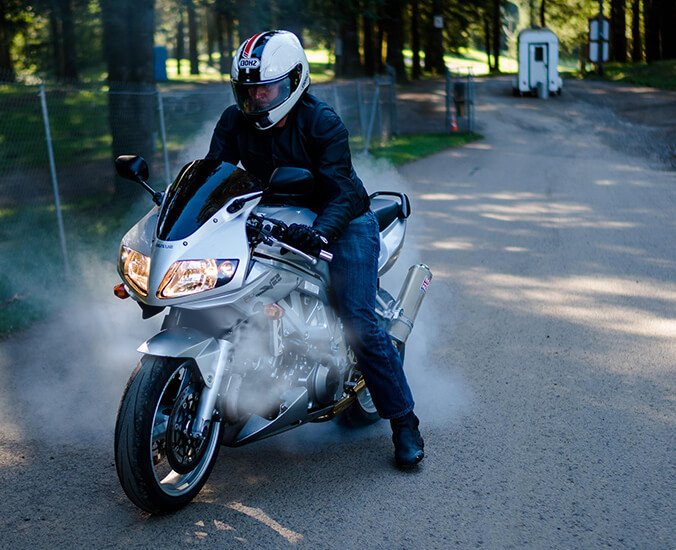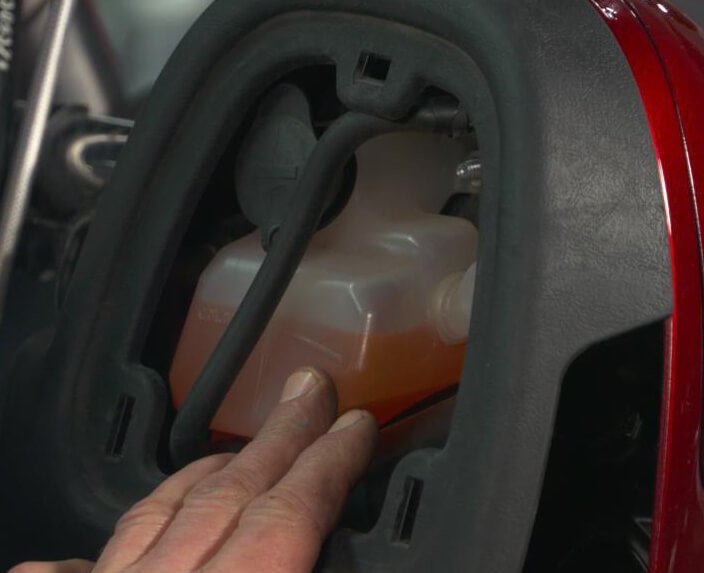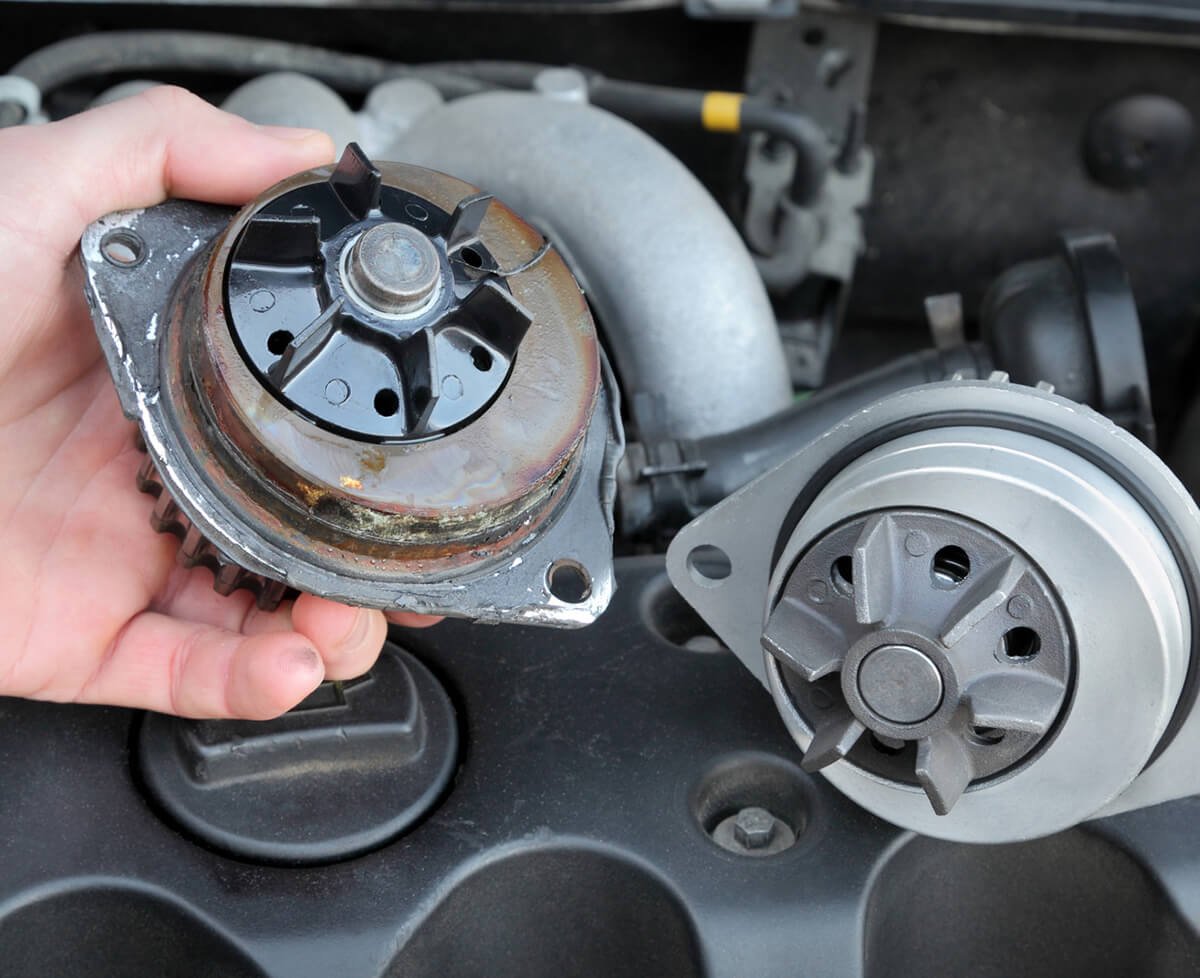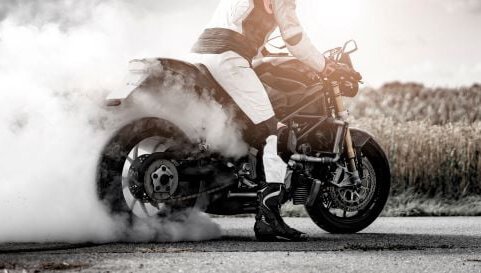Getting your snowmobile’s track adjusted correctly doesn’t have to be complicated. In this guide, we’ll show you the tools, step-by-step instructions, and troubleshooting tips for all major brands — Polaris, Ski‑Doo/Lynx, Arctic Cat, Yamaha, and more. If you do it right, your snowmobile will run great quickly. Why Track Tension Matters Track tension directly affects […]

How to Cool Down the Motorcycle Engine Fast?
Motorcycle engines work hard. This happens when you're dealing with traffic, enjoying a ride on a warm summer day, or pushing your motorcycle to the max. Getting too hot can mess up your engine, make your ride less zoomy, and hit your wallet hard with repairs. That's why getting the lowdown on how to cool down the motorcycle engine fast and in the right way is super important
In this article, we're going to give you the scoop on all things about making your motorcycle's engine cool down, including stuff that makes your engine's temperature go up, what to do in a tight spot, and ways to stop your engine from overheating in the first place. Plus, we're going to take a peek at how much load your motorcycle can take since that's got a direct say in how your engine does its job and stays cool.
Table of Contents
Why Do Motorcycle Engines Overheat?
Motorcycle engines generate heat through combustion and friction. While this heat is normal, it needs to be dissipated efficiently. If heat builds up and the cooling system can’t keep up, the engine will overheat.
Here are some common reasons why this happens:
- Caught in Traffic: When you get jammed up on the road, your engine doesn't get much breeze to chill out, which makes it tougher to keep cool.
- Scorching Temps: When it's blazing hot outside, your engine feels it too when you're cruising in the full glare of the sun.
- Overloading: Hauling too much stuff puts a bunch of extra pressure on the engine, and this means it has to hustle more and get hotter.
- Slacking on Upkeep: If your oil's all cruddy, your radiator's all gummed up or you're running low on coolant, your engine's gonna struggle to stay chill.
- High RPMs: When you hammer it on the highway or keep revving up the engine, you're pushing your engine to its breaking point.
When you pick up on overheating symptoms like the scent of a sizzling engine, power dipping, or alert symbols flashing on your dash, please take action quickly to cool it down.

motorcycle engines overheat
Immediate Emergency Actions
Safe Pull-Over Procedures
Step one: pull over safely. Don’t just slam on the brakes and stop in the middle of traffic or on a busy street. Find a safe, flat area with plenty of space, preferably shaded if you can. If you want to avoid any further heat buildup, keep your motorcycle away from direct sunlight.
Quick Temperature Assessment
After you are safely pulled over, it's the moment to assess the situation. Certain motorcycles are built with temperature gauges. You should see if the needle's hanging out in the danger zone, which is usually in the red or above.
Lack of a gauge? No sweat! Just hover your hand near the engine—carefully, not super close—and if it feels like touching a stove then you bet, you've got yourself a problem.
Techniques to Cool Down the Motorcycle Engine
At this point, the goal is to reduce the engine's temperature as fast as possible, but without causing damage.
Here are some effective ways to cool down your motorcycle engine quickly and safely:
1. Stop and Turn off the Engine
The first and most obvious step is to stop your bike and turn off the engine. This gives the engine a chance to cool without generating more heat. Find a shady spot to park if possible, as direct sunlight will make the cooling process slower.
Pro Tip: Don’t rev the engine before turning it off, as this can actually increase the temperature.
2. Let It Idle (If Stopping Isn’t an Option)
If you're stuck in traffic or can’t stop, let your engine idle. While idling, the engine produces less heat compared to riding at high RPMs. If your bike has a fan, it will also kick in to help cool the engine.
Important: Don’t keep the engine idling for too long if there’s no airflow, as this can make overheating worse.
3. Check Coolant Levels

check the coolant levels of the motorcycle
Motorbikes with liquid cooling systems often get too hot because there's not enough coolant. Peek at the coolant tank and fill it up when it's low. Stick with the coolant kind your motorbike's maker suggests.
Quick Tip: Never open the radiator cap immediately after stopping the engine. The coolant inside may be under pressure and extremely hot.
4. Spray Water on the Radiator or Engine Fins
If you’re in a bind and need to cool the engine quickly, you can spray water onto the radiator (for liquid-cooled bikes) or engine fins (for air-cooled bikes). Use a spray bottle or pour water gently to avoid shocking the hot metal.
Caution: Do not use cold water directly on a very hot engine, as this can cause cracks or warping due to sudden temperature changes.
5. Turn on the Cooling Fan
Most modern motorcycles with liquid cooling systems have an electric fan attached to the radiator. The fan helps draw cool air over the radiator, even when the bike is stationary. If your bike allows manual control of the fan, turn it on when you notice the engine heating up.
Diagnose the Root Cause
Common Overheating Triggers
Understanding why your motorcycle overheated is key to preventing it from happening again.
Here are a few common culprits:
- Low coolant levels: A lack of coolant is one of the most common reasons for overheating. Coolant helps absorb heat from the engine and dissipate it through the radiator. Learn how often you should replace the coolant and how to change the coolant is necessary.
- Clogged cooling fins: Dirt, dust, or oil buildup can obstruct the air or coolant flow needed to cool down the engine.
- Over-revving or high-speed riding: Using your motorcycle too hard, especially in stop-and-go traffic or at high speeds, can increase engine temperature faster than your cooling system can handle.

faulty radiator fan
- Faulty radiator fan or pump: These are less common but critical failures. If your bike has a cooling fan, ensure it’s working properly.
Warning Signs to Watch
Keep an eye out for signs that your engine is at risk of overheating again. These include:
- Unusual engine noise: A high-pitched whine or knocking sound could be a sign of something wrong with the internal components.
- Excessive smoke or steam: This is a sign that the engine has reached dangerously high temperatures and could be close to suffering internal damage.
How Much Weight Can a Motorcycle Handle?
Overloading your motorcycle can directly impact its engine performance and cooling ability. To avoid putting unnecessary strain on the engine, it’s important to know your bike’s weight capacity.
1. Check the Gross Vehicle Weight Rating (GVWR)
The GVWR is the maximum weight your motorcycle can handle, including the bike itself, the rider, passengers, and any cargo. This information can usually be found in the owner’s manual or on a sticker near the frame.
2. Consider the Load Distribution
It’s not just about the total weight but also how it’s distributed. Uneven weight can affect handling and increase stress on certain parts of the engine.
Tip: Use saddlebags and tank bags to distribute weight evenly.

use tank bags to distribute weight evenly
3. Adjust Suspension and Tire Pressure
Riding with extra weight can affect your suspension and tires. Adjust the suspension settings and tire pressure according to the load to maintain stability and safety.
Essential Cooling Maintenance
Regular maintenance is your best defense against overheating:
Flush and replace coolant regularly, following the manufacturer’s guidelines. Old or ineffective coolant can lose its ability to dissipate heat.
Clean the cooling fins: These often gather dirt and debris, especially after off-road or long-distance riding. Clean them every couple of months to ensure proper air circulation.
Heat Management Tips
During the ride, managing heat can make all the difference:
- Don’t ride at high RPMs for extended periods: This can stress your engine and cause it to overheat faster.

Don’t ride at high RPMs
- Keep an eye on the weather: Riding in hot conditions? Plan your ride for cooler times of the day, like early morning or late evening.
- Give your engine a break: If you’ve been riding hard, take periodic breaks to let the engine cool down.
Conclusion
Cooling down your motorcycle's engine fast is key to dodging damage and ensuring a smooth ride. If you get stuck in traffic, experience scorching weather, or give your motorcycle a workout on winding roads dealing with an overheating engine is super important.
Just keep in mind, that quick fixes are awesome when you're in a tight spot. However, keeping up with regular upkeep and getting why your engine heats up will mean a smarter safer, chill ride for the long haul.
Look after your engine's temperature, and your motorcycle will thank you.
What Is Best Motorcycle Engine Size To Start (Full List Size Include)
How to Choose the Right Engine Oil for Motorcycles? 9 Expert Tips
Do I Need to Warm Up Motorcycle Engine in Winter?
8 Main Different Types of Motorcycle Engines
How Often Should You Replace Motorcycle Coolant?
How to Change Motorcycle Coolant: A Simple DIY Guide (Save $100+)

Motorcycle mechanic, writer. Interested in motorcycle gear for years. Like to stay up to date with the newest products and techniques of the motorcycle.
Motorcycle riding is all about the sense of freedom, adventure, and thrill of the open road. But come on—being connected when you ride isn't always an easy thing. Whether you're riding with a buddy, navigating traffic in the city, or long-distance riding, effective communication is crucial. That's where the Fodsports T5 and T6 come in, […]
If you're looking for a new motorcycle intercom system this year, Fodsports has something exciting in store. The company has launched two new Bluetooth helmet intercoms: T1 and T1 Pro. Both models bring upgraded features, sleek design, and high-definition audio quality for riders who want to stay connected, entertained, and safe on the road. But […]
Fodsports T1 and T1 Pro: The Newest Bluetooth Intercoms for Riders Shop Fodsports T1 Pro Whether you’re cruising on highways, exploring rugged trails, or commuting daily, clear communication is key. Fodsports is thrilled to launch its latest Bluetooth intercoms: the T1 and T1 Pro. Built for riders who demand reliability, versatility, and crystal-clear sound, these […]
Many riders who aren't so tall or ladies just starting to ride bikes need to pick out the best Motorcycles for Short Riders and Women. They gotta look for three key things: a seat that's not too high up, a bike that's not too heavy, and something that looks good enough to give them confidence. […]
Fodsports FX 60C vs FX30C Pro: What's new techs are the FX 60C bringing to us? Fodsports is a brand worth-mention for helmet communication and video recording. This brand has established itself as a key player with its innovative Bluetooth camera intercom systems. Recently, Fodsports has released a new camera intercom, the FX 60C. How […]

